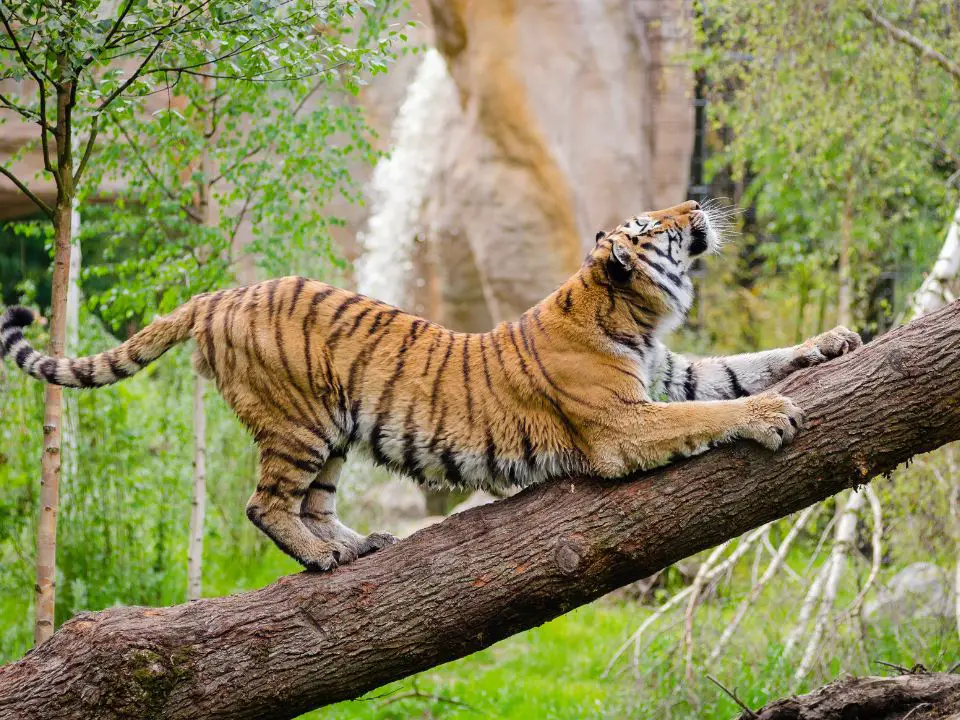Of all the big cats, tigers are perhaps the most iconic and popular. These magnificent animals have been revered throughout history and cultures around the world. Today, there are only a few thousand tigers left in the wild, and their future is uncertain.
Tigers are adaptable creatures that can live in a variety of habitats. They are found in forests, grasslands, swamps, and even mangrove forests. In recent years however, their habitat has shrunk dramatically due to human activity such as deforestation and hunting. As a result, tigers now occupy only about 7% of their historical range. Despite these challenges, tigers have shown an amazing ability to adapt to changing conditions. For example, they have learned to avoid contact with humans by using forest corridors connecting protected areas – something that was once thought impossible.
Adaptations Of A Tiger
Behavioral Adaptations Of A Tiger
The tiger is one of the most feared predators in the world. But what makes this animal so fearsome? Part of it has to do with their behavioral adaptations.

- Tigers are solitary hunters and prefer to hunt alone. They will stalk their prey for hours, waiting for the perfect moment to strike. When they attack, they do so with deadly precision, using their powerful jaws and sharp claws to kill their victim quickly and efficiently.
- But tigers aren’t just fierce predators; they’re also skilled swimmers and climbers. They often use these skills to surprise their prey from above or below, giving them a significant advantage in the hunt.

Physical Adaptations Of A Tiger / Structural Adaptations Of A Tiger
The tiger is one of the most physically adapted predators on the planet. The tiger has many physical adaptations that allow it to be such an effective hunter and killer.
- The first adaptation is the tiger’s size and strength. A full-grown male tiger can weigh up to 660 pounds and stand over 3 feet tall at the shoulder. This gives them a lot of power to take down their prey, even large animals like deer or wild boar.
- It is muscular and agile, with long legs and a long tail that helps it balance when running and leaping.
- It also has strong, muscular legs that allow it to run fast and jump far.
- The tiger’s coat provides camouflage in the forests where they live. The stripes on the coat help break up the animal’s outline so it can blend in with the trees and bushes. This allows the tiger to surprise its prey before attacking.

Physiological Adaptations Of A Tiger
- The most impressive adaptation of the tiger is its muscular body, which allows it to run at speeds up to 60 kilometers per hour (37 miles per hour) over short distances.
- The tiger has long, sharp claws that can rip through flesh and bone with ease. They are also used for gripping prey and climbing trees
- Its teeth are also incredibly sharp and strong, capable of crushing prey’s skulls.
- They have good night vision so they can hunt at night or in dark places like caves or dense forests during the day time too.

- Another adaptation that allows tigers to be such successful hunters is their keen sense of smell and hearing. Tigers can smell their prey from up to 2 miles away, which gives them a big advantage when trying to track it down. They also have excellent hearing, which helps them locate their prey even when it’s hiding in thick vegetation or far away in open spaces.
Combined with their speed and agility, these senses make tigers deadly predators capable of taking down almost any animal they encounter.








